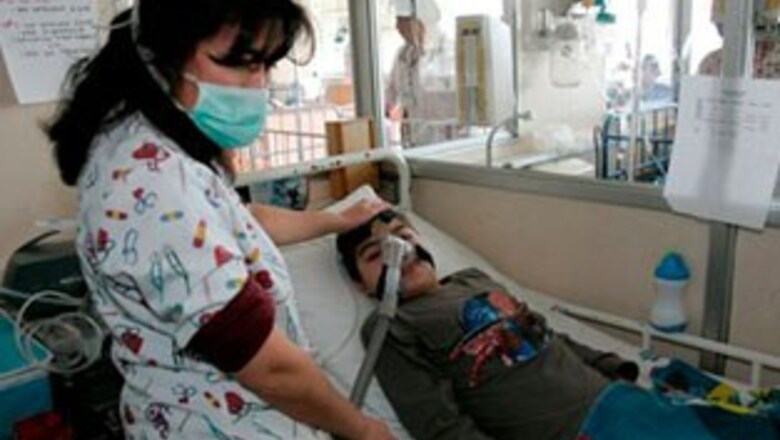
views
Beijing: The global spread of swine flu will endanger more lives as it speeds up in the coming months and governments must boost preparations for a swift response to a coming "explosion" of cases, the World Health Organization said on Friday.
Many countries could see swine flu cases double every three to four days for several months until peak transmission is reached, once cold weather returns to the northern hemisphere, said WHO's Western Pacific director, Shin Young-soo.
"At a certain point, there will seem to be an explosion in case numbers," Shin told a symposium of health officials and experts in Beijing. "It is certain there will be more cases and more deaths."
The WHO says the swine flu virus, also known as H1N1, has killed almost 1,800 people worldwide, and has declared it a pandemic.
International attention has focused on how the pandemic is progressing in southern hemisphere countries such as Australia where winter, and the flu season has started.
But it is in developing countries that the accelerated spread of swine flu poses the greatest threat as it places under-equipped and under-funded health systems under severe strain, Shin said.
WHO earlier estimated that as many as 2 billion people could become infected over the next two years, nearly one-third of the world's population.
Others said Shin's cautionary comments were needed but that they were optimistic the spread would not be that serious.
Ann Moen, an influenza expert with the US Centers for Disease Control and Prevention, said that if current trends continue it is possible that the swine flu pandemic will not be worse than a severe flu season.
"I think the world was preparing for an H5N1 (bird flu) pandemic and we didn't get that. So maybe this is our supreme tabletop exercise, a global sort of practice for something bigger," Moen told The Associated Press.
Health officials and drug makers are considering how to speed up production of a vaccine before the northern hemisphere enters its flu season in coming months. Estimates for when a vaccine will be available range from September to December.
Delegates from Bangladesh and Myanmar appealed for help in procuring vaccines or making them more affordable for poorer countries, saying they were left vulnerable while rich nations pre-ordered most of the available stock.
"Developing countries like us, we have to fight this war without vaccines," said Mya Oo, deputy health minister of Myanmar. He urged pharmaceutical companies to consider selling the vaccines to developing countries at just above cost.
WHO's flu chief, Keiji Fukuda, said the agency was working hard on the issue, and noted that two drugmakers had pledged to donate 150 million doses of vaccine to poorer countries by the end of October. He said more research was needed to determine how vaccines will be priced.
"Among the many pandemic response issues, this is probably the most critical issue: how we mobilize the vaccines, how we get them to developing countries," Fukuda said.
WHO has stressed that most cases of swine flu are mild and require no treatment, but the fear is that a rash of new infections could overwhelm hospitals and health authorities, especially in poorer countries.
Shin said governments must quickly educate the public, prepare their health systems to care for severe cases and protect those deemed more vulnerable to prevent unnecessary deaths.
"We only have a short time period to reach the state of preparedness deemed necessary," Shin said. "Communities must be aware before a pandemic strikes as to what they can do to reduce the spread of the virus, and how to obtain early treatment of severe cases."
Pregnant women face a higher risk of complications, and the virus also has more severe effects on people with underlying medical conditions such as asthma, cardiovascular disease, diabetes, autoimmune disorders and diabetes, WHO chief Margaret Chan said in a video address.
The last pandemic, the Hong Kong flu of 1968, killed about 1 million people. Ordinary flu kills about 250,000 to 500,000 people each year.
Swine flu is also continuing to spread during summer in the northern hemisphere. Normally, flu viruses disappear with warm weather, but swine flu is proving to be resilient.
















Comments
0 comment